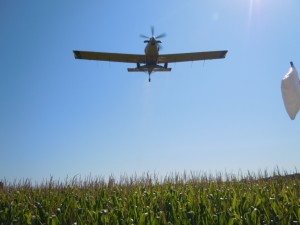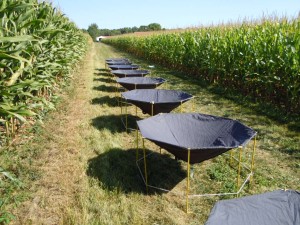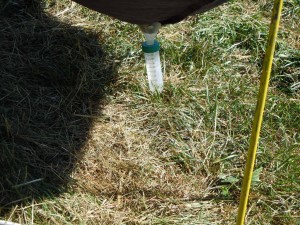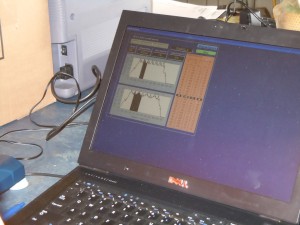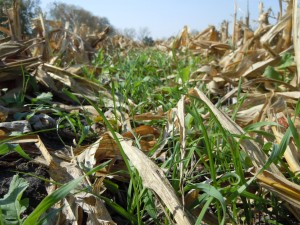I have heard that a number of aerial applicators admit that they are guessing approximately how wide they need to fly to apply different cover crops. I have seen evidence that some of them have guessed wrong! Two or three years ago an applicator guessed wrong by leaving approximately 80’ wide gaps in a number of fields (of course he charged $2-3/acre less to apply the cover crop…so it was a good deal, right?!?). These guys might have been okay at the “art of flying” but they did not understand the science of aerial applying the cover crops.
This past August I had the privilege of working with Dave and Garrett Eby from AgriFlite Services in Wakarusa, IN on the science of aerial applying cover crops. AgriFlite worked with Dennis R. Gardisser, PhD, P.E. from WRK of Arkansas LLC to determine flight patterns, height, and speed with six different cover crop mixes and species.
I was part of the “measuring team” that helped to determine the spread pattern of each of the different mixes. It was very interesting to see how the wind affected the spread pattern by as much as 12 feet and how Garrett adjusted his flight route to make up the difference (that’s some of the “art part” of aerial application).
After each mix or species was flown on the seeds that were caught in the different “seed collectors” were weighed by a scientific scale (an extremely sensitive scale). The data collected by this test assured that AgriFlite would not have gaps and skips with the different cover crop mixes or cover crop species they flew on in producer’s fields. The information gathered is property of AgriFlite and is available for a cost by calling Dave Eby at 574-862-4392.

